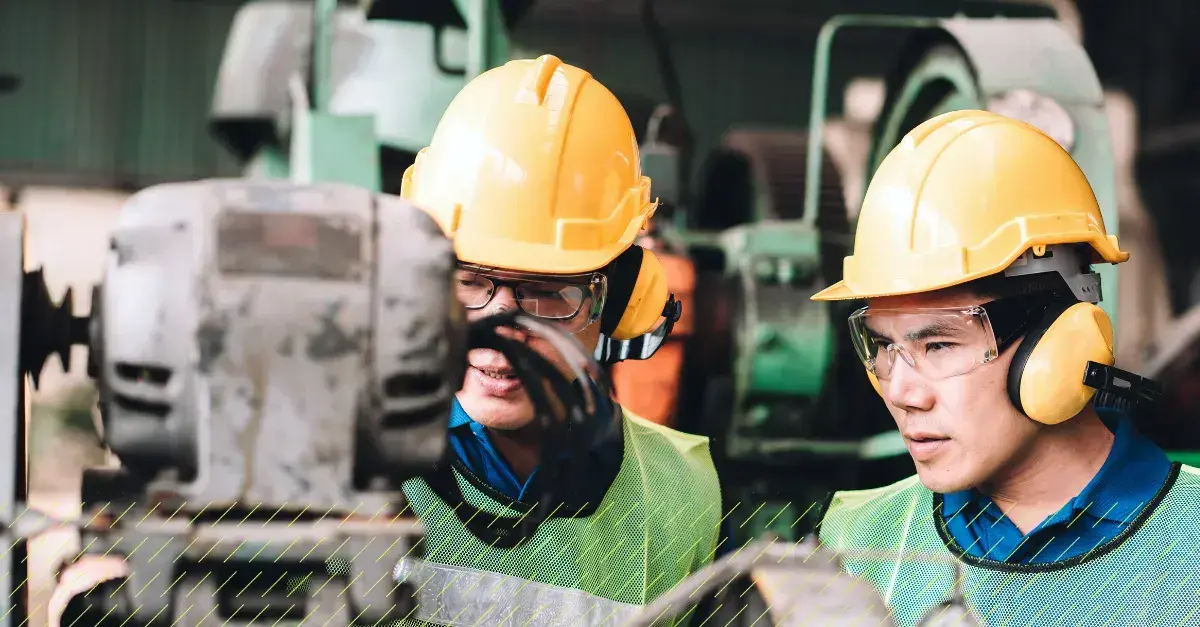Manufacturing trends in 2024: Familiar problems and new challenges.
The past 2-3 years haven't been easy for the manufacturing and industrial tech sectors.
- The industrial tech sector experienced a widespread procurement and investment freeze due to inflation.
- Reshoring and nearshoring efforts shifted priorities to utilizing existing systems and solutions.
- Connected worker solutions gained momentum and interest, however, buying intent stayed relatively low.
- Thin margins and lagging IT infrastructures are also familiar blockers.
Source: Houlihan Loukey
The climate for innovative tech adoption was relatively lukewarm.
But in the past year, as interest rates stabilize, there is a renewed interest in investing in solutions that elevate the frontline workforce.
We've gathered the most important manufacturing trends impacting the frontline in 2024 in three categories:
- New tech impacting the frontline workforce.
- A changing frontline workforce.
- A new response from manufacturing leaders in order to cope with these changes.
New tech for the manufacturing industry.
It might seem obvious, but new technologies form the basis of many changes that the frontline will experience in the coming years.
Connectivity, infrastructure, and digital skills.
As connected mobile devices and cloud infrastructure become more widespread, organizations are moving away from on-premise technology and manual processes for frontline tasks.
This shift has led to improved data capture capabilities, making it easier to measure activity and productivity.
It has also led to the importance of acquiring necessary digital skills (Source: PwC / Manufacturing Institute Survey, Q3 2023).
💡Nearly 92% of jobs now require some form of digital skills.
AI is everywhere - including the frontline.
On the subject of new digital skills - it's impossible to talk about tech in today's landscape without mentioning AI. Naturally, it's made its way to the frontline and manufacturing industries.
Embedding AI in tools for the frontline can help with precise quality controls, reduction of errors, and it can provide valuable insights to support decision-making on the shop floor.
For example: AI algorithms can optimize production schedules based on factors like demand forecasts, resource availability, and equipment efficiency - leading to improved throughput and resource utilization.
But also, it can significantly streamline the hiring process.
In 2024, AI is expected to play a major role in frontline work recruitment and onboarding, offering automation, bias reduction, and insightful analytics. Embracing these technologies enables organizations to enhance recruitment, draw in top talent, and foster diverse, high-performing frontline teams.
The changing frontline.
Expectations for the new generation of frontline workers are different from what they used to be.
Their pursuit of excellence and acknowledgment underscores the importance of their satisfaction. This serves as a crucial factor in resilience, efficiency, productivity, retention, and advocacy for their employers.
This signals a pivotal shift in frontline workforce management.
In an industry that reaches an almost 40% employee turnover rate, even a small increase in retention can have a significant positive impact on overall profitability.
The key reason for this high turnover?
It's often the unmet needs of the frontline.
We see a huge disconnect between management and their frontline teams. 65% of frontline leaders believe they have effective communication strategies, but only 35% of frontline workers feel heard. And 89% of frontline workers will stay with their companies if leaders listen to their feedback.
Context is also critical to frontline worker happiness. They don’t want to work in a silo. In fact, it's no longer a thing.
Instead, what they really want is:
- A better understanding of why and when things change
- Clearer goals and objectives
- Closer insight into the bigger picture for the business
- New ways of working
New ways of working.
Now, what do we do with all of this information?
That brings us to our third ‘trend.’ More than ever, we’ll need to respond to these changes in a new way.
Our reaction to the changing technological landscape andaccomodating a new frontline workforce must keep pace with this dynamic industry.
It all comes down to:
- Having a clear strategy and available tools
- Focusing on frontline skills
- Investing in efficient employee training
- Ensuring physical and emotional safety on the shopfloor
Want to take a deeper dive into any of these topics? We explore each in greater detail in the video above, and it's also available here.
Want more frontline content?
👉 What to look for in an employee training platform.
👉 How we improved safety at Coca-Cola.
👉 How to boost production flexibility (and efficiency).



